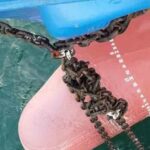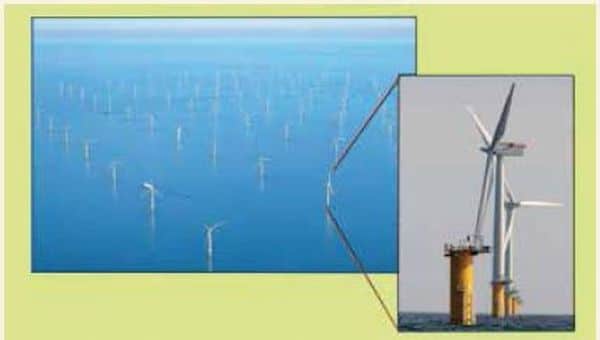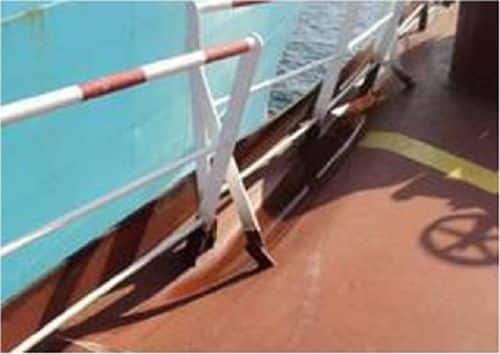Real Life Incident: On The Bridge But Not On The Job Leads To Collision
A car carrier in ballast was making way at about 20 knots in good visibility (approximately 12nm) and light winds. As the vessel approached a major shipping lane it was observed that the traffic density was getting heavier. Two radars were set in relative motion on the 12nm range scale with an off-centred display. As a consequence, both radars were scanning approximately 18nm ahead. Another radar, also off-centred, was on the 6nm range scale. Apparently, no collision warning alarms were programmed on the ARPA sets.
In the afternoon, the OOW was alone on the bridge and immersed in the task of planning the next voyage on paper charts. Several vessels were within visual and radar range, including Vessel A. At one point, the OOW interrupted his chart work to make a minor course alteration of 3° to starboard on the autopilot. He then returned to his chart work, apparently unaware of vessel A approaching on his starboard side.

About 17 minutes after making the minor course alteration the noise of the collision with Vessel A brought him to his senses. The official investigation found, among other things:
- A single lookout during daytime is the norm at sea and does not contravene international requirements. However, a number of factors need to be kept into perspective before deciding on the minimum number of lookouts on the bridge. In particular, consider the need to keep a proper lookout by sight and hearing at all time, and that the OOW is not to undertake any duties that would interfere with the safe navigation of the ship.
- All three ARPA sets had been set up off-centred, displaying a longer range in the ahead position. However, this mode carries an important disadvantage: the reduction in the scanning range on the vessel’s beams and abaft the beams.
- Although the chart preparation area was part of the open-style bridge, its location was not ideal for visibility forward and quite inappropriate for visibility abeam.
- Neither vessel apparently took any action before the collision.
Lessons learned
1. It is prudent to have a dedicated lookout at all times when in congested waters .
2. As an OOW on a vessel underway, your primary job is to navigate that vessel in a safe and efficient manner. Accomplishing extra duties, as in this case, or allowing yourself to be distracted by mobile phones or irrelevant conversations with crewmates while navigating, will eventually lead to no good.
Reference: nautinst.org
Do you have info to share with us ? Suggest a correction
- Real Life Incident: Vessel Collision in Good Visibility
- Real Life Incident: Severe Injury To Deck Crew While Leaving Berth
- Real Life Incident: Departure Damage in Very Restricted Waterway
- Real Life Incident: Low Situational Awareness Has High Impact Consequence
- Real Life Incident: Fouled Anchor in a Designated Anchorage
- Real Life Incident: Fire On Barge Carrying Scrap Metal Causes $7 Million Worth Of Damage
Latest Case studies Articles You Would Like:
Subscribe To Our Newsletters
By subscribing, you agree to our Privacy Policy and may receive occasional deal communications; you can unsubscribe anytime.
Web Stories




















